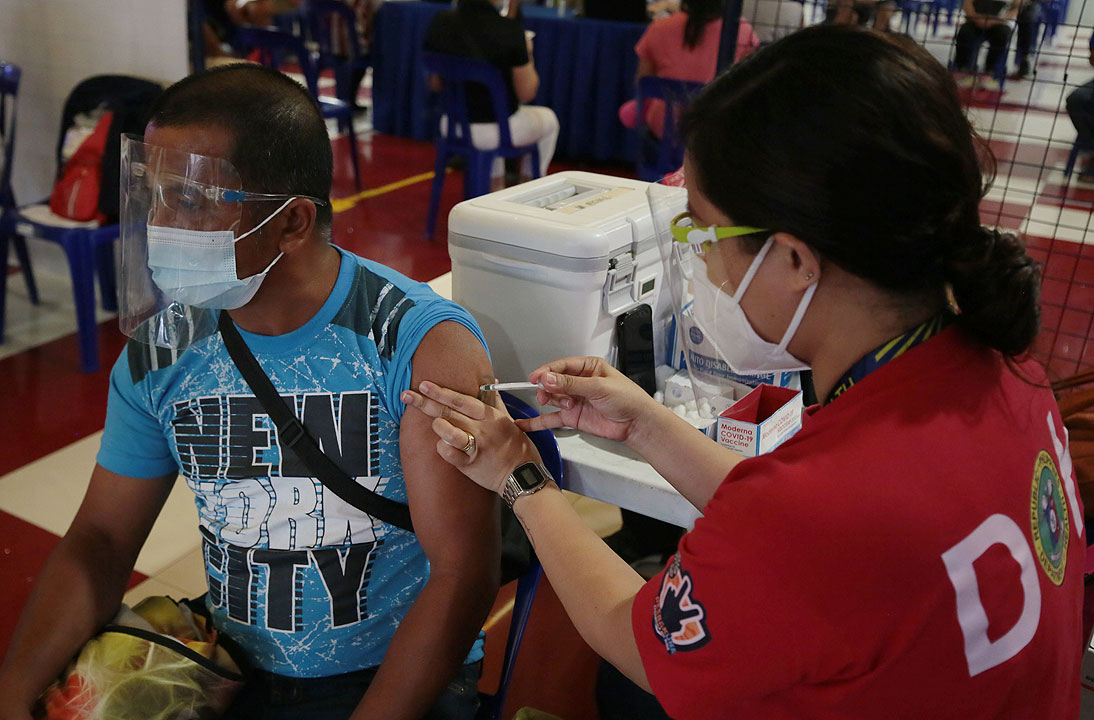Fitch, AMRO lower Philippine growth forecast this year as coronavirus persists
Fitch, AMRO lower Philippine growth forecast this year as coronavirus persists
Fitch, AMRO lower Philippine growth forecast this year as coronavirus persists
October 8, 2021 12:32 am

THE PHILIPPINE ECONOMY is likely to grow
slower than initially expected this year, with Fitch Ratings and the ASEAN+3 Macroeconomic Research Office (AMRO) trimming their forecasts amid the persistent Delta outbreak and sluggish vaccine rollout.
Fitch Ratings in a report on Thursday said it lowered the Philippine gross domestic product (GDP) growth projection to 4.4% in 2021, from 5% previously.
On the other hand, AMRO slashed its GDP forecast for the Philippines to 4.3%, from 6.4% penciled in last June.
Both forecasts are closer to the lower end of the government’s 4-5% full-year target, but a reversal of the record 9.6% slump in 2020.
“The resurgence in daily coronavirus disease 2019 (COVID-19) infections since late July and the Philippines’ low rate of vaccination pose a risk to our growth forecasts,” Fitch said in a note on Thursday.
The Health department reported 10,019 new COVID-19 infections on Thursday, bringing the number of active cases to 115,328.
Latest data from the Johns Hopkins University showed only 23.47% of the Philippine population has been fully vaccinated against COVID-19.
“Because of the recent wave of infections, we had to shave down our growth forecast for the Philippines,” AMRO Chief Economist Hoe Ee Khor said at a virtual briefing on Thursday.
“The Philippines, unlike many of the countries in the region, is very much a service-oriented economy, and that’s the reason they’ve been hit harder than some of the countries in the region.”
Economic activity has been affected by the lockdowns meant to curb the COVID-19 surge since March 2020. In August, a fresh wave of infections prompted the government to place Metro Manila under a strict lockdown for two weeks.
Restrictions have since been loosened to allow more businesses to operate, and the government has shifted to granular lockdowns only in areas with high numbers of COVID-19 infections.
“The economic impact of the COVID-19 shock for the Philippines in 2020 was far worse than we had previously expected due to the local infection rate and the impact of lockdown measures on domestic activity,” Fitch said.
Fitch expects Philippine GDP to grow by 6.8% next year, slightly higher than the 6.6% it previously gave.
It also slightly raised its projection on the general government’s debt-to-GDP ratio this year to 52.8% from the 52.7% it gave in July.
Fitch warned that failure to resume to its pre-pandemic high economic growth trend after the pandemic subsides could be a factor for a ratings downgrade. This scenario will reflect “a loss of macroeconomic policy credibility or structural damage from the crisis.”
In July, Fitch downgraded the rating outlook for the Philippines to “negative” from “stable,” citing the impact of the prolonged pandemic. This means there is a possibility that its investment grade “BBB” rating could be downgraded in the next 12 to 18 months.
OUTLOOK
In its ASEAN+3 Regional Economic Outlook 2021 Update report, AMRO also trimmed the country’s 2022 GDP growth forecast to 6.7% from 6.8% in June and the 7.8% set in March.
This is lower than the 7-9% government growth target for 2022.
Economic managers have said they expect the economy to return to its pre-crisis level by the fourth quarter of 2022 or the first quarter of 2023.
“Once the economy’s opened up, I think the economy would bounce back quite sharply,” Mr. Khor said.
“We encourage the authorities to use the policy space that they have to avoid the scarring of the economy and to allow the businesses to bounce back faster.”
AMRO’s GDP projection for ASEAN this year is 2.7% amid an anticipated 18.7% contraction in Myanmar. The ASEAN+3 estimate, which includes China, Hong Kong, Japan, and Korea, is 6.1% after flat growth in 2020.
Under AMRO projections, the Philippines would have the fourth-fastest growth within ASEAN+3 this year. China would lead with 8.2%, followed by Hong Kong (6.5%) and Singapore (6.3%).
“The road to recovery is paved with vaccinations. With the majority of regional economies on track to achieve their vaccination targets by early 2022, we expect the ASEAN+3 region to grow by 5% next year, slightly better than our March projections,” Mr. Khor said.
However, AMRO noted that governments’ “policy responses will also need to be as nimble and quick to change as the virus… Any premature or miscommunicated withdrawal of the financial support measures could potentially trigger a cliff effect.”
“Tapering pandemic support will be the great balancing act for the ASEAN+3 in 2022. Exiting too quickly risks derailing the region’s recovery; exiting too slowly risks propping up unviable businesses and sectors at huge expense to the fiscal purse,” Li Lian Ong, AMRO group head of financial surveillance and regional surveillance, said.
ASEAN+3 economies that have been experiencing gradual recovery have started to scale back policy support, AMRO said, but countries like the Philippines and Thailand have continued to provide fiscal support as these economies struggle with high COVID-19 caseloads and “challenging” vaccination progress.
The Philippines is one of most economies in the region that still has relatively ample policy space, with Singapore being the strongest while Laos, Myanmar, and Japan lag behind.
AMRO recommends that the country expand its fiscal and credit policy while maintaining its current stance on monetary and macroprudential policy.
“There is no ‘one size fits all’ exit strategy, given that each economy should take into consideration existing macro and socioeconomic conditions, such as healthcare capacity, the speed and trajectory of economic recovery, and policy space,” AMRO said.
Headline inflation is expected to average at 4.3% this year, higher than the March projection of 3.8%, AMRO said. This is above the central bank’s 2-4% target range for 2021.
In 2022, projected average headline inflation is 3.2%, down from the previous 3.3% forecast. —
Jenina P. Ibañez
and
Luz Wendy T. Noble
